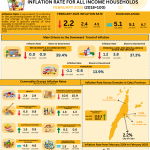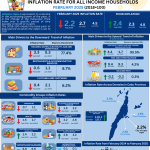Inflation Rate
The Philippines’ inflation rate jumped to 4.9 percent in April 2022, up from 4.0 percent in March 2022. This is the highest inflation recorded since January 2019. Inflation in April 2021 was lower at 4.1 percent. The average inflation for the first four months of the year stood at 3.7 percent. (see Table B and Figure 1)
On the other hand, Central Visayas had an increase of inflation at 5.4 percent from 5.0 percent in March 2022. In April 2021, the inflation in the region was observed at 2.3 percent. Central Visayas had an average of 5.1 percent for the first four months of the year. (see Table B and Figure 1)
Meanwhile, the Province of Siquijor recorded an increase of 5.9 percent in April of 2022. This was 1.5 percent higher in March 2022 with an inflation of 4.4 percent. The inflation in April 2021 was registered at 3.2 percent. The first four months of the year for the province had an average inflation of 4.9 percent. (see Table B and Figure 1)
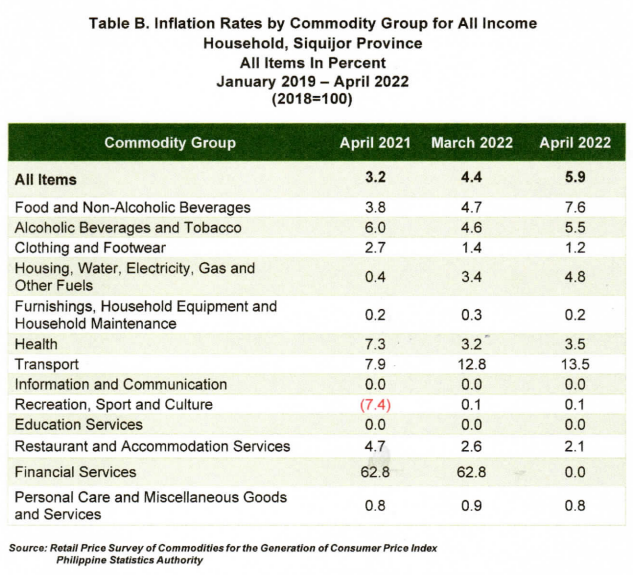

The higher inflation in the Province of Siquijor was influenced by the higher inflation of food and non-alcoholic beverage at 7.6 percent, housing, water, electricity, gas and other fuels at 4.8 percent and transport at 13.5 percent. (see Table B)
Moreover, higher inflation were also observed in the following commodity group in the province:
1. Alcohol Beverages and Tobacoo at 5.5 percent; and
2. Health at 3.5 percent.
Other commodity groups either registered a decreased in its growth rate or retained last month’s rates. (see Table B)
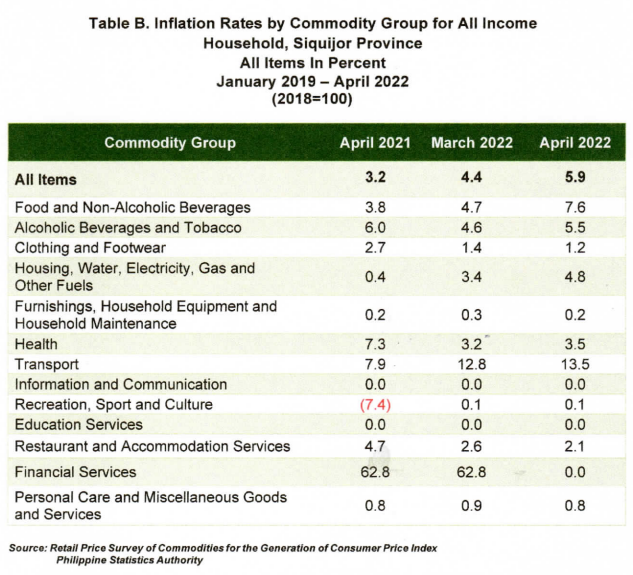
Consumer Price Index (CPI)
The month of April for the year 2022 generated a CPI of 113.0. It is 1.8 higher than that of March 2022 which had a CPI of 111.2. During the same period in April 2021, the CPI for Siquijor Province recorded at 106.7. (see Table D)
Commodities under Transport group had the highest increment at 2.8 or from 118.3 in March 2022 to 121.1 in April 2022 while commodities under the Restaurant and Accommodation Services group had the lowest increment at 0.7. (see Table D)
On the other hand, the following commodity groups retained its last month CPI:
Clothing and Footwear;
Furnishings, Household Equipment and Household Maintenance;
Information and Communication;
Recreation, Sport and Culture;
Education Services;
Financial Services; and
Personal Care and Miscellaneous Goods and Services. (see Table D)
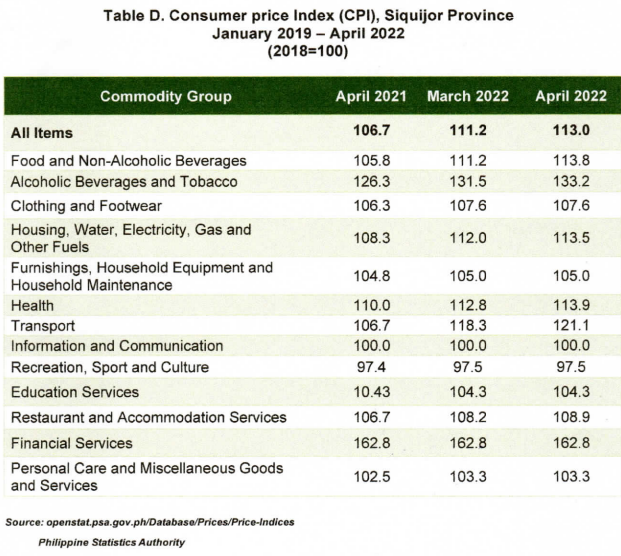
Purchasing Power of Peso (PPP)
The Purchasing Power of Peso (PPP) in the Province of Siquijor lowered in April of 2022 by 0.02 or from 0.90 in March 2022 to 0.88 in April 2022. During the same month of 2021, the Purchasing Power of Peso (PPP) of Siquijor was at 0.94. (see Figure 2)
With the value of Php 1.00 in 2018, the PPP for the month of April 2022 values only at Php 0.88.
TECHNICAL NOTES
Uses of CPI
The CPI is most widely used in the calculation of the inflation rate and purchasing power of peso. It is a major statistical series used for economic analysis and as monitoring indicator of the government economic policy.
Computation of CPI
The computation of CPI involves consideration of the following important points:
Base Period – The reference date or base period is the benchmark or reference date or period at which the index is taken as equal to 100.
Market Basket – A sample of the thousands of varieties of goods purchased for consumption and the services availed by the households in the country selected to represent the composite price behavior of all goods and services purchased by consumers.
Weighting System – The weighting pattern uses the expenditures on various consumer items purchased by households as a proportion to total expenditure.
Formula – The formula used in computing the CPI is the weighted arithmetic mean of price relatives, the Laspeyre’s formula with a fixed base year period (2012) weights.
Geographic Coverage – CPI values are computed at the national, regional, and provincial levels, and or selected cities.
Inflation Rate is the rate of change of the CPI expressed in percent. See table 2 for the year on year inflation rate for all items.
Purchasing Power of Peso (PPP) is computed as the reciprocal of the CPI multiplied by 100. The PPP is inversely related to inflation rate. Thus, as the inflation rate increases from the base year, PPP declines.
(SDG.) AURELIA M. CANDA
Chief Statistical Specialist



